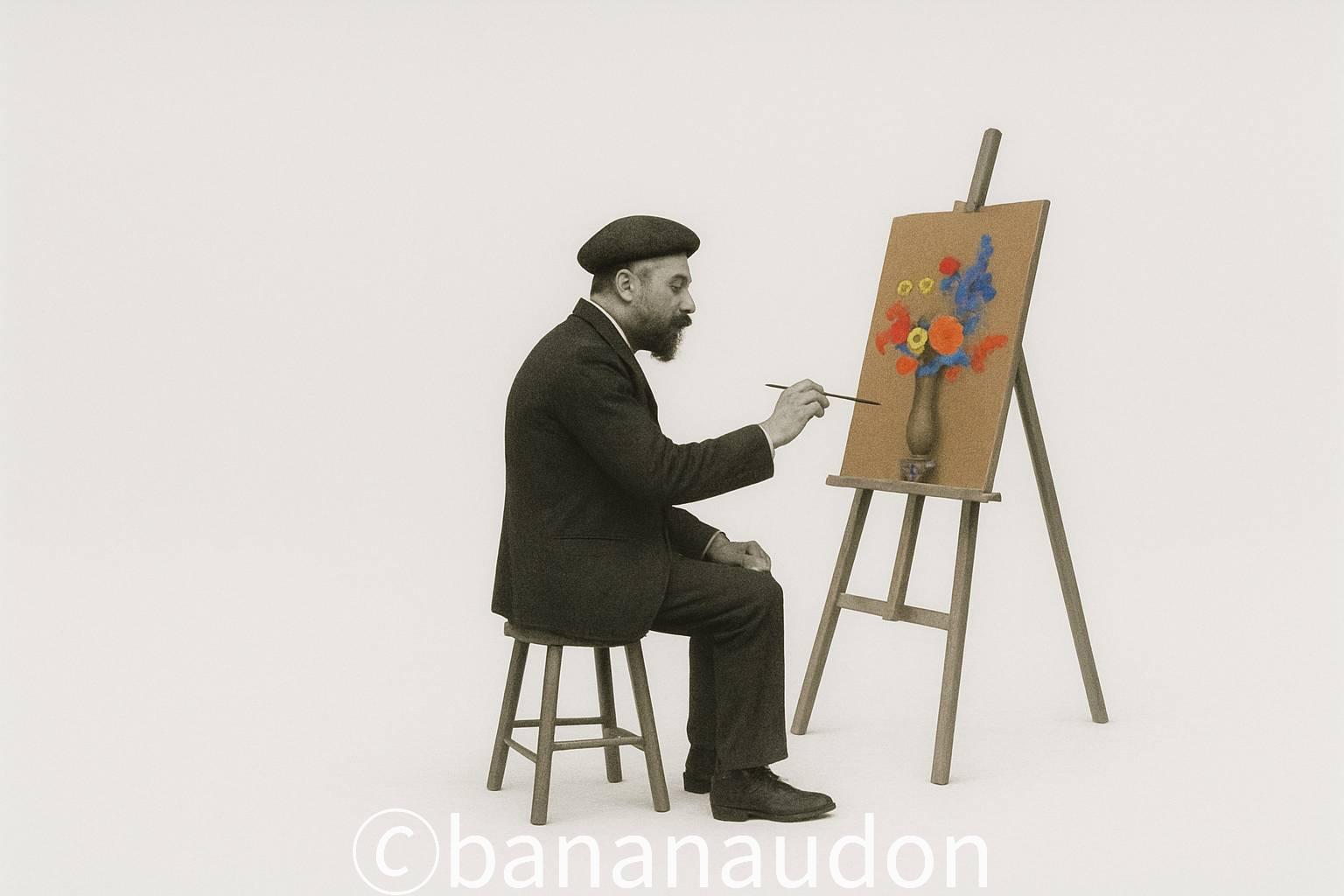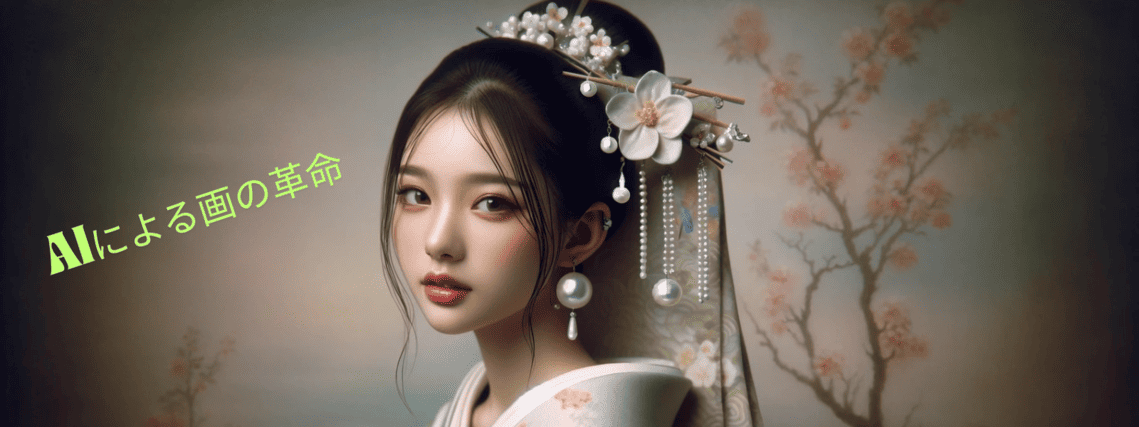Reinterpreting “Wildflowers in a Long-Necked Vase”: A Phantom Bouquet on a Stage of Emptiness
2025.05.18投稿
広告

Reimagining a masterpiece is more than imitation—it’s a dialogue across time. This article examines a contemporary reinterpretation of Odilon Redon’s “Wildflowers in a Long-Necked Vase,” where color and void become a stage for the birth of vision. Step inside the metaphysical space where Redon’s symbolic flowers bloom once more, not from nature, but from the soul.
Interpretation and Critique of the Reimagined Artwork
First Impressions and Reflections
At first glance, the image appears like a sepia-toned photograph from another century—a monochromatic world frozen in time. Yet, within this quiet composition, a vivid bouquet of flowers bursts into existence. The most striking element here is not the color itself, but how it coexists with the surrounding void. Seated calmly is a man in a suit, brush in hand, painting these hallucinatory wildflowers. The atmosphere is not serene but suspended—where time halts to let the act of creation speak.
This work is not merely a painting; it is a visual meditation on the act of painting, paused and held like breath. The stillness carries an unsettling poetic tension.
Identifying the Original Masterpiece
- Title of the Original: *Wildflowers in a Long-Necked Vase* (French: *Fleurs des champs dans un vase à long col*)
- Artist: Odilon Redon
- Year: c. 1905
- Historical Context: Redon began his career creating dark, visionary works during what was called his “Noirs” period. However, in his later years—especially after the birth of his son—he shifted dramatically toward works filled with radiant, dreamlike color. This floral still life is a prime example of that late phase, where flowers became vessels of inner sensation rather than representations of reality.
- Defining Characteristics: A disproportionately elongated vase, oddly arranged wildflowers, and chromatic combinations unmoored from botanical accuracy—all hallmarks of Redon’s symbolic, introspective style.
Key Elements of the Reinterpretation
- The Figure of the Painter: The man painting may be a stand-in for Redon himself. More than imitation, it feels like an enactment—Redon performing himself. It creates a recursive loop of identity: the artist painting his own vision, becoming both creator and subject.
- Color vs. Monochrome: The flowers are vibrant, just as in Redon’s originals. But everything else—the painter, the stool, the background—has been drained of color. This radical contrast emphasizes how Redon’s artistic awakening was anchored entirely in chromatic perception. Color is not a property of the world but an eruption of the spirit.
- Medium Transformation: While Redon’s original works utilized soft gradients of pastel and oil, this reinterpretation renders texture digitally. The painterly surface is flattened into image, where flowers become less material than they are signals—visual traces of imagination.
- Change in Perspective: Traditional Redon still lifes are frontal. Here, we view the scene from the side. This turns the viewer into a voyeur—someone peeking into the sacred act of conjuring a dream into form. We are no longer observing the artwork, but the miracle of its birth.
Interpretive Analysis
This reinterpretation attempts to capture the precise moment when a vision becomes tangible. Redon’s flowers were never meant to replicate nature. They are psychic blooms—sprouting from within. By showing the act of painting rather than the finished product, the artist behind this modern work reframes the image as a testimony of emergence: from the unconscious, through the hand, into the world.
The background’s blankness becomes meaningful. It is not a void, but a projection surface—a mental canvas. And from that mental space, a dream is made visible. The flowers do not belong to the real world. They float. They hover. They haunt.
Final Critique
This is not merely a reinterpretation—it is an invocation. The contemporary artist resurrects Redon’s spiritual universe and re-stages it as a metaphysical performance. By stripping away environment and human detail, they elevate Redon’s chromatic language into a state of pure presence.
“Wildflowers in a Long-Necked Vase” was never about botany. It was about the soul’s longing to bloom. This modern reflection capture
